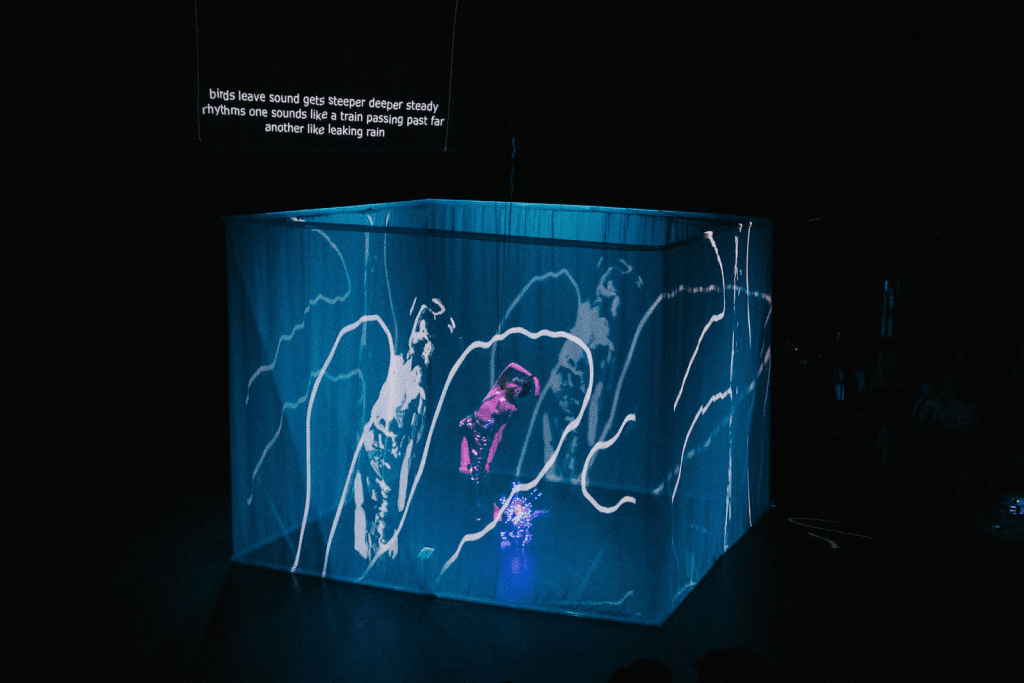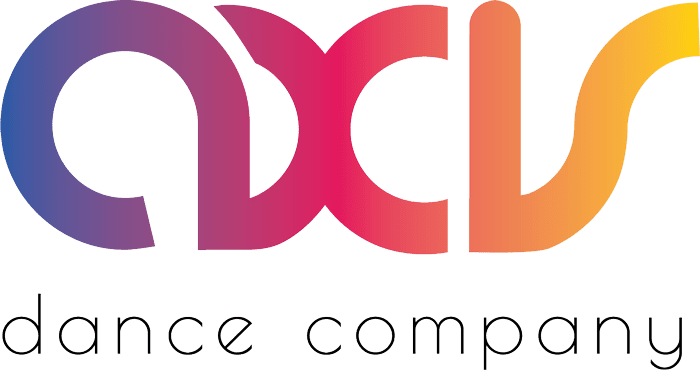Many disabled artists have taken to using access features as compositional materials for art-making. Things like captions or ASL interpretation or visual descriptions, which we often think of as added onto an original work of art, are becoming creatively embedded into artistry as a set of materials.

Photo of Yo Yo Lin’s performance Channels by Ahad Subzwari (Courtesy of The Shed). Made in collaboration with Despina & Pelenakeke Brown: More information linked here.
What opens up when we perceive accessibility not as a set of obligations for compliance with laws and regulations – things that often destroy the creative impulse – but as a kind of artistry itself?
Disabled artists are artists. Disability dance and performance artistry takes many forms that ableist public perceptions of disability often lump together. These works do not always, automatically emerge from the experience of trauma, pain, and duress. This work can be funny and playful and often surprising.

Questions
- Are you engaging disabled artists for their artistic contributions?
- Can you be thorough and specific about disabled artists’ work?
- Can you identify the differences in the works of disabled artists?
- Do you notice opportunities for the integration of access features for audiences as an extension of the artwork itself?
- Are the access features you’re imagining for a particular production available to everyone? Or do specific audiences need to make contact in order to access them?
Resources
-
Taking ADA from the Page to the Stage
-
ImPArt: Exploring the aesthetics of access internationally
-
Graeae Theatre Company at Bradbury Studios
-
Feeling, Not Seeing, the Performing Arts: Theaters Get Creative About Accessibility
-
Creative Captions in The Boy with Two Hearts at the National Theatre
-
Roots Above Ground by Marc Brew
-
Audiomance: Multi-Channel Audio Description
